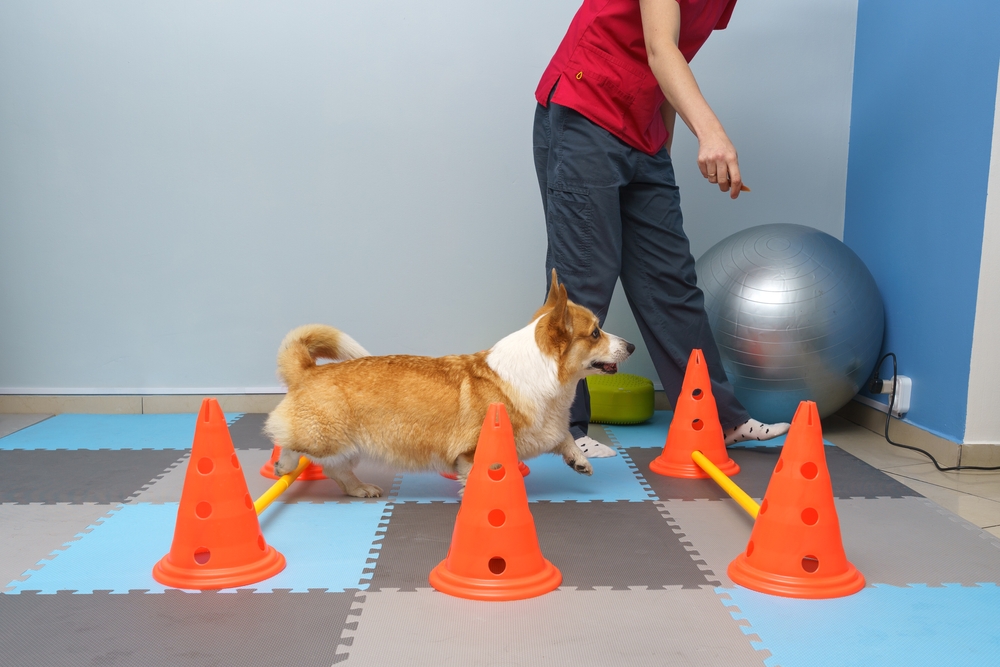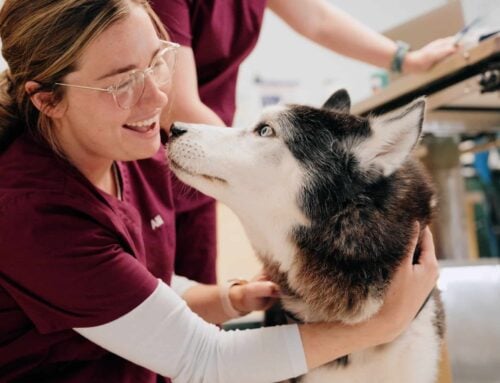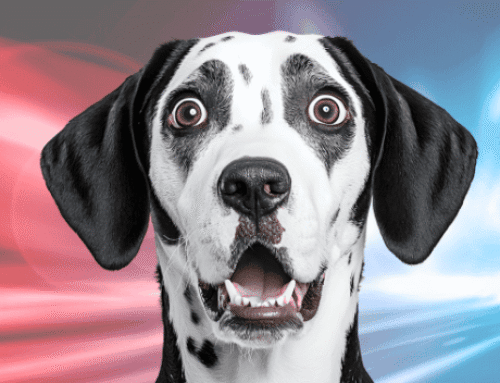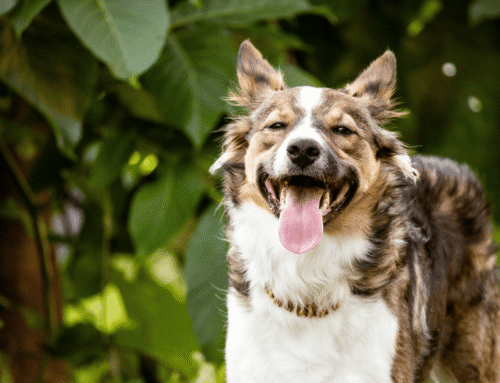Veterinary rehabilitation is an exciting and transformational therapeutic option for injured, post-operative, mobility-impaired, or chronically painful pets. Shuler Veterinary Clinic, which is an Animal Hospitals of the Low Country practice, is proud to offer veterinary rehabilitation services for our new and current patients. Here, we answer our most frequently asked questions about this versatile and powerful service.
Question: What is veterinary rehabilitation?
Answer: Physical rehabilitation is a relatively new veterinary specialty that is in many ways similar to human physical therapy and sports medicine. Veterinary rehabilitation focuses on your pet’s total wellness by combining pain management, movement-based exercises, and manual therapies to decrease pain and restrictions, improve mobility, build physical strength and coordination, and enhance confidence and independence.
Q: What is a Certified Canine Rehabilitation Practitioner (CCRP)?
A: The CCRP credential designates specialized veterinary rehabilitation training and education. The University of Tennessee’s Certified Canine Rehabilitation Practitioner (CCRP) program has been a leader in specialized postgraduate training since 1999. Program graduates must complete an in-depth online learning experience, attend hands-on training sessions, and be observed for 40 hours by an established CCRP. The course culminates in a rigorous written and practical certification exam in which veterinary professionals must apply their skills to real patients by recommending and implementing real therapeutic techniques.
Shuler Veterinary Clinic is proud to have our own in-clinic CCRP, Dr. Marian Shuler Holladay DVM, CCRP, CVA. Contact our team to schedule a consultation with Dr. Holladay.
Q: What conditions benefit from veterinary rehabilitation?
A: We believe that every pet can benefit from veterinary rehabilitation because, unlike other therapies, medications, and procedures, rehabilitation can be modified and tailored for each individual pet. The wide range of modalities and techniques means no two pets will be treated with the same rehab session or plan.
Conditions we most commonly treat and manage with rehabilitation include:
- Pain management — Pain and inflammation-relieving therapies improve comfortable mobility and quality of life.
- Weight loss and management — Safe, low-impact exercise programs and nutritional counseling create a synergistic effect and help pets slim down while having fun.
- Senior pet strength and fitness — Geriatric rehabilitation preserves muscle mass, mobility, and independence in aging pets and reduces arthritis pain and stiffness.
- Orthopedic surgery recovery — Orthopedic rehabilitation restores comfortable function and independence after cruciate ligament repair, luxating patella surgery, and femoral head and neck excision.
- Neurologic conditions — Rehabilitation can help paralyzed pets learn to walk again or preserve mobility and independence in pets with progressive diseases (e.g., degenerative myelopathy).
- Soft tissue conditions— Manual therapies and photobiomodulation can expedite soft tissue healing (e.g., tendon, ligament, or muscle injuries, and surgical incisions).
- Chronic injury or condition management — Therapies can reduce chronic pain and help pets adapt to their altered mobility (e.g., osteoarthritis, intervertebral disc disease [IVDD]). Consistent rehabilitation may mean your pet’s daily pain medications can be reduced or eliminated.
- Sports conditioning and injury prevention — Canine athletes and weekend warriors receive targeted sport-specific training to stay in shape, reach their peak, and avoid injuries.
Q: What therapies will my pet receive during rehabilitation?
A: Each pet’s rehabilitation treatment plan and goals are unique to their specific condition, pain level abilities, and personality, and may be adjusted over time to ensure consistent improvement. Some modalities that your pet’s plan may include are:
- Photobiomodulation — Photobiomodulation (i.e., laser therapy) is a painless, noninvasive modality that uses light to stimulate healing and reduce pain and inflammation on a cellular level.
- Acupuncture — Acupuncture is an ancient Chinese medicine technique that uses hair-thin needles to stimulate specific points on the body and improve circulation, relieve pain, and enhance energy flow (i.e., Qi).
- Manual therapies — Manual treatments may include massage, stretching, and passive range of motion to enhance blood flow, accelerate toxin removal, improve flexibility, and preserve strength.
- Therapeutic exercises — Therapeutic exercises encourage your pet to use their body weight as resistance and engage specific muscle groups, and challenge their coordination, proprioception (i.e., body awareness), and flexibility in a safe low-impact environment.
Q: Is veterinary rehabilitation painful?
A: Pain is detrimental to physical healing and negatively affects your pet’s emotional health. The Shuler Veterinary Clinic team practices comprehensive and aggressive pain management protocols to ensure every pet is comfortable throughout the therapeutic or recovery process. These include:
- Frequent pain assessment — Our trained team will evaluate your pet’s pain level at each visit and use that score to inform and direct their daily treatments.
- Analgesic therapies — Many rehabilitation modalities provide pain-relieving and inflammation-reducing benefits.
- Owner education — We will explain common behavior signs that can indicate pain at home.
Q: If my pet doesn’t like visiting the veterinarian, will they like rehabilitation?
A: Successful rehabilitation requires that pets be comfortable and engaged in their therapy, so our team uses low-stress handling techniques, positive reinforcement (i.e., treats and praise), and adapts each treatment plan to suit the pet’s preferences and motivations. As a result, our clients are delighted to discover that their pets enjoy attending and participating in their rehabilitation sessions—a surprise benefit that may also transfer to regular veterinary care visits.
Q: How can I get my pet started with rehabilitation?
A: If you’re interested in learning how physical rehabilitation can enhance your pet’s quality of life, contact Shuler Veterinary Clinic to schedule a rehabilitation consultation. This visit will help us get to know your pet, understand their needs, establish baseline measurements, and set treatment goals.
Whether your pet is an elite athlete, a recovering weekend warrior, or an aging senior, the rehabilitation services at Shuler Veterinary Clinic, which is an Animal Hospitals of the Low Country practice, can help them live their best life. Contact us to schedule your pet’s appointment.









Leave A Comment